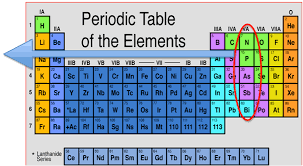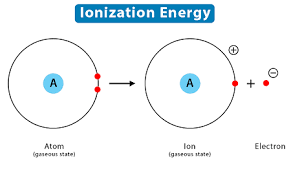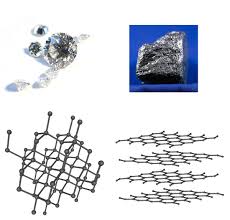
CBSE Class 12 Chemistry Notes Chapter 7: Achieving success in CBSE exams requires a thorough grasp of chemistry concepts. Thus Class 12 students must obtain well-structured Chemistry Class 12 Notes to excel in their studies.
Our notes for Chapter 7 The p-Block Elements are created by experienced teachers and are designed to help students comprehend the essential concepts of p-block elements. These notes are aligned with the NCERT Pattern and the latest syllabus ensuring a detailed understanding of the topic. With our chapter-wise CBSE Class 12 Chemistry notes students can build a solid foundation in chemistry.CBSE Class 12 Chemistry Notes Chapter 7 The p-Block Elements Overview
These notes for CBSE Class 12 Chemistry Chapter 7 The p-Block Elements are prepared by subject experts of Physics Wallah. These notes provide a thorough overview of the p-block elements. By aligning with the latest NCERT syllabus they ensure that students grasp the fundamental concepts and nuances of p-block chemistry. Whether for revision or in-depth study, these expertly created notes are an invaluable resource for mastering the complexities of p-block elements and achieving success in the CBSE Class 12 exams.CBSE Class 12 Chemistry Notes Chapter 7 PDF Download
The PDF for CBSE Class 12 Chemistry Chapter 7 The p-Block Elements is available below. This resource is designed to help students grasp complex concepts with ease and is aligned with the latest NCERT syllabus. Whether you are preparing for exams or revising key topics, this PDF provides a detailed guide to mastering p-block chemistry ensuring you are well-equipped for your CBSE Class 12 Chemistry exams.CBSE Class 12 Chemistry Notes Chapter 7 The p-Block Elements PDF
CBSE Class 12 Chemistry Notes Chapter 7 The p-Block Elements
Here we have provided CBSE Class 12 Chemistry Notes Chapter 7 The p-Block Elements-Introduction
The p-block elements in the periodic table are positioned in Groups 13 to 18, characterized by a general valence shell electronic configuration. The properties of these elements are significantly influenced by variations in atomic size, ionization energy, electron gain enthalpy, and electronegativity. Notably, the first element of each group often exhibits anomalous behavior compared to its group members due to its smaller size and higher electronegativity.Group 15 Elements
 Group 15 includes nitrogen, phosphorus, arsenic, antimony, bismuth, and moscovium. As we move down the group, the elements transition from non-metallic to metallic characteristics, passing through a metalloid phase. Nitrogen and phosphorus are non-metals, arsenic and antimony are metalloids, while bismuth and moscovium are typical metals.
Helium, with an electronic configuration of
1s2,
is also a p-block element. Though it lacks orbitals beyond the 1s level, helium's physical and chemical properties are similar to other p-block elements in the 18th group, contributing to the diverse nature of p-block elements, which range from non-metals to metalloids and metals.
Group 15 includes nitrogen, phosphorus, arsenic, antimony, bismuth, and moscovium. As we move down the group, the elements transition from non-metallic to metallic characteristics, passing through a metalloid phase. Nitrogen and phosphorus are non-metals, arsenic and antimony are metalloids, while bismuth and moscovium are typical metals.
Helium, with an electronic configuration of
1s2,
is also a p-block element. Though it lacks orbitals beyond the 1s level, helium's physical and chemical properties are similar to other p-block elements in the 18th group, contributing to the diverse nature of p-block elements, which range from non-metals to metalloids and metals.
Occurrence of Group 15 Elements
Group 15 elements include nitrogen, phosphorus, arsenic, antimony, and bismuth. Nitrogen, a major component of the Earth's atmosphere, constitutes about 78% of it by volume. It is commonly found in its free state as diatomic nitrogen gas and also occurs in compounds like sodium nitrate (NaNO₃) and potassium nitrate (KNO₃). Nitrogen is vital in the form of proteins in plants and animals. Phosphorus is primarily found in minerals of the apatite family, such as fluorapatite, which is a key component of phosphate rocks. Phosphorus plays a crucial role in biological systems, being a fundamental constituent of DNA, RNA, and phosphoproteins, as well as making up about 60% of bones and teeth. On the other hand, arsenic, antimony, and bismuth are mainly found in the form of sulphide minerals like stibnite and bismuth glance.Periodic Trends in Group 15 Elements
As you progress down Group 15 of the periodic table, starting with nitrogen and ending with bismuth, there is a noticeable change in the properties of these elements. Nitrogen, the lightest element in the group, is a non-metal and exists as a diatomic gas. However, as you move down the group, the elements transition from non-metals to metalloids (like arsenic and antimony) and finally to metals, such as bismuth. These trends help us understand atomic behavior and predict the properties of new elements. The electronic configuration of Group 15 elements is characterized by a valence shell configuration of ns²np³. This stable arrangement, with a filled s-orbital and half-filled p-orbitals, makes these elements chemically similar. Moving down the group, the atomic and ionic radii increase due to the addition of new orbitals. The covalent radius shows a significant increase from nitrogen to phosphorus, while the increase in ionic radius is more gradual from arsenic to bismuth, influenced by the filling of d and f orbitals in the heavier elements.Ionization Enthalpy
 Ionization energy refers to the amount of energy required to remove an electron from the outermost orbit of an atom. It is influenced by how strongly the nucleus holds onto the electron. The closer an electron is to the nucleus, the stronger the attraction, and therefore, more energy is needed to remove it.
In Group 15 elements, as we move down the group from nitrogen to bismuth, the atomic radius increases, which results in a decrease in ionization energy. This is because the outer electrons are farther from the nucleus and experience a weaker attraction, making them easier to remove.
The ionization enthalpy of Group 15 elements is generally higher than that of Group 14 elements within the same period, owing to the extra stability provided by the half-filled p orbitals in Group 15. However, as you move down the group, the ionization enthalpy gradually decreases due to the increasing atomic size and the resulting decrease in nuclear attraction.
Ionization energy refers to the amount of energy required to remove an electron from the outermost orbit of an atom. It is influenced by how strongly the nucleus holds onto the electron. The closer an electron is to the nucleus, the stronger the attraction, and therefore, more energy is needed to remove it.
In Group 15 elements, as we move down the group from nitrogen to bismuth, the atomic radius increases, which results in a decrease in ionization energy. This is because the outer electrons are farther from the nucleus and experience a weaker attraction, making them easier to remove.
The ionization enthalpy of Group 15 elements is generally higher than that of Group 14 elements within the same period, owing to the extra stability provided by the half-filled p orbitals in Group 15. However, as you move down the group, the ionization enthalpy gradually decreases due to the increasing atomic size and the resulting decrease in nuclear attraction.
Electronegativity
 Electronegativity refers to the tendency of an atom to attract electrons towards itself in a chemical bond. In Group 15, electronegativity decreases as you move down the group. This is because the increasing atomic size reduces the attraction between the nucleus and the bonding electrons. However, the change in electronegativity is less pronounced among the heavier elements in the group.
Electronegativity refers to the tendency of an atom to attract electrons towards itself in a chemical bond. In Group 15, electronegativity decreases as you move down the group. This is because the increasing atomic size reduces the attraction between the nucleus and the bonding electrons. However, the change in electronegativity is less pronounced among the heavier elements in the group.
Physical Properties
The elements in Group 15 exhibit a variety of physical states. Nitrogen, at the top of the group, is a diatomic gas, while the elements below it show a progression in metallic character. Phosphorus is a non-metal, arsenic and antimony are metalloids, and bismuth is a metal. These changes in physical properties are linked to the decrease in ionization enthalpy and the increase in atomic size as you move down the group. The boiling points of these elements generally increase as you move down the group, while the melting points increase up to arsenic and then decrease towards bismuth. Except for nitrogen, all Group 15 elements exhibit allotropy, meaning they exist in different structural forms. For example, phosphorus has several allotropic forms, such as white phosphorus and red phosphorus.Allotropy
 In Group 15, all elements except bismuth exhibit allotropy, meaning they exist in different structural forms. For example, nitrogen exists in two allotropic forms: alpha nitrogen and beta nitrogen. Phosphorus has multiple allotropic forms, with red and white phosphorus being the most significant.
Arsenic also shows allotropy with three primary forms: black, grey, and yellow arsenic. Similarly, antimony exists in three forms: yellow, metallic, and explosive antimony. These allotropic variations result from differences in the arrangement of atoms within the element, which can lead to distinct physical and chemical properties.
In Group 15, all elements except bismuth exhibit allotropy, meaning they exist in different structural forms. For example, nitrogen exists in two allotropic forms: alpha nitrogen and beta nitrogen. Phosphorus has multiple allotropic forms, with red and white phosphorus being the most significant.
Arsenic also shows allotropy with three primary forms: black, grey, and yellow arsenic. Similarly, antimony exists in three forms: yellow, metallic, and explosive antimony. These allotropic variations result from differences in the arrangement of atoms within the element, which can lead to distinct physical and chemical properties.
Chemical Properties
Group 15 elements have a general valence shell electronic configuration of ns² np³. This configuration allows them to either lose 5 electrons or gain 3, leading to common oxidation states of -3, +3, and +5. As you move down the group, the atomic radius increases, resulting in a decrease in ionization enthalpy and electronegativity. Consequently, the tendency to gain three electrons and form a -3 oxidation state decreases. Bismuth, the heaviest element in the group, rarely forms compounds with a -3 oxidation state. Additionally, the stability of the +5 oxidation state decreases as you move down the group, while the +3 oxidation state becomes more stable due to the inert pair effect. Nitrogen can also exhibit oxidation states of +1, +2, and +4 when it reacts with oxygen, while phosphorus can show +1 and +4 oxidation states in some of its oxoacids.Covalency
In Group 15, nitrogen exhibits a covalency of four, which is limited by the availability of orbitals-one s orbital and three p orbitals. This is because nitrogen lacks d orbitals, preventing it from expanding its octet. However, heavier elements in the group, such as phosphorus, arsenic, antimony, and bismuth, possess vacant d orbitals, allowing them to exhibit covalencies greater than four.Apatite Family
The apatite family refers to a group of isomorphous hexagonal phosphate minerals that are chemically similar. The main members of this family include fluorapatite, chlorapatite, and hydroxylapatite. These minerals are significant because they form the basis of the teeth and bones in various animals, including humans, where calcium phosphate is a key component. The broader apatite supergroup includes additional minerals such as pyromorphite, mimetite, and vanadinite. Apatite is particularly important in agriculture as it is the primary source of phosphorus, a vital nutrient for plants. Phosphate rock, largely composed of apatite minerals, is extensively mined to produce phosphate fertilizers, which are crucial for crop production.Anomalous Behavior of Nitrogen
Nitrogen, the first element in Group 15, exhibits several unique characteristics compared to its heavier congeners, primarily due to its smaller atomic size, high electronegativity, and high ionization enthalpy. Additionally, nitrogen lacks vacant d orbitals, which significantly impacts its chemical behavior.Formation of Multiple Bonds:
- Nitrogen can form strong pπ–pπ multiple bonds with itself and other small, electronegative elements such as carbon and oxygen. This ability arises because nitrogen's atomic orbitals are appropriately sized to allow effective overlap, leading to the formation of stable multiple bonds.
- Nitrogen exists as a diatomic molecule (N₂) with a triple bond between the two atoms, consisting of one sigma (σ) bond and two pi (π) bonds. This triple bond gives nitrogen a very high bond enthalpy (941.1 kJ mol⁻¹), making it a relatively inert gas.
- In contrast, the larger atomic orbitals of heavier Group 15 elements are too diffuse for effective pπ–pπ overlap, preventing the formation of similar multiple bonds.
Catenation and Bond Strength:
- Nitrogen shows a limited tendency for catenation (the ability to form chains of identical atoms) due to the weak N–N single bond, which is attributed to the high interelectronic repulsion between non-bonding electron pairs on adjacent nitrogen atoms.
- Phosphorus and other heavier Group 15 elements exhibit stronger P–P single bonds due to larger atomic sizes and lower repulsion, leading to a greater tendency for catenation.
Absence of d Orbitals:
- Nitrogen's valence shell lacks d orbitals, limiting its covalency to four. Unlike its heavier counterparts, nitrogen cannot expand its octet to form dπ–pπ bonds. This limitation prevents nitrogen from forming compounds in the +5 oxidation state with a covalency greater than four, such as R₃P=O or R₃P=CH₂, where R is an alkyl group.
- Heavier Group 15 elements like phosphorus and arsenic can form dπ–pπ bonds, allowing them to interact with transition metals as ligands and form complexes with higher covalencies.
Reactivity Towards Hydrogen:
- Group 15 elements form hydrides of the type EH₃, where E represents the element. The stability of these hydrides decreases down the group, with bond dissociation enthalpies decreasing from NH₃ to BiH₃. This trend makes ammonia (NH₃) a mild reducing agent, while bismuth hydride (BiH₃) is a strong reducing agent.
- The basicity of these hydrides also decreases in the order: NH₃ > PH₃ > AsH₃ > SbH₃ ≥ BiH₃.
Reactivity Towards Oxygen:
- Group 15 elements form oxides in two oxidation states, E₂O₃ and E₂O₅. The oxides in the higher oxidation state are more acidic, and their acidic character decreases down the group. Nitrogen and phosphorus oxides are strongly acidic, while arsenic and antimony oxides are amphoteric, and bismuth oxides are predominantly basic.
Reactivity Towards Halogens:
- These elements form halides in two oxidation states, EX₃ and EX₅. Nitrogen, due to the absence of d orbitals, does not form pentahalides (EX₅) and is limited to forming stable trihalides, with NF₃ being the most stable. The stability of trihalides generally decreases down the group, with BiF₃ being an exception due to its covalent character.
Reactivity Towards Metals:
- Group 15 elements react with metals to form binary compounds in the -3 oxidation state, such as calcium nitride (Ca₃N₂), calcium phosphide (Ca₃P₂), sodium arsenide (Na₃As₂), zinc antimonide (Zn₃Sb₂), and magnesium bismuthide (Mg₃Bi₂).
Benefits of CBSE Class 12 Chemistry Notes Chapter 7 The p-Block Elements
- Comprehensive Coverage : The notes provide a thorough understanding of all key concepts in Chapter 7 including the properties, reactions, and uses of p-block elements, helping students grasp the material efficiently.
- Concise and Organized : The notes are well-structured and concise allowing students to quickly review important points and easily navigate through different topics.
- Concept Clarity : The notes focus on clarifying complex concepts such as allotropy, oxidation states, and the anomalous behavior of nitrogen making it easier for students to understand and remember these topics.
- Exam-Oriented : The notes are designed with CBSE exams in mind, highlighting important topics, key definitions, and commonly asked questions, which helps students focus their revision on the most critical areas.
- Time-Saving : By summarizing the entire chapter these notes save students time in revision, allowing them to review the material quickly before exams.
- Enhanced Retention : The notes are written in simple language and include mnemonics and shortcuts, helping students retain information better.
CBSE Class 12 Chemistry Notes Chapter 7 FAQs
What are p-block elements?
p-Block elements are those elements in which the last electron enters any of the three p-orbitals of their respective shells. They are found in groups 13 to 18 of the periodic table and include elements like nitrogen, oxygen, fluorine, and noble gases.
Why does nitrogen show anomalous behavior in the p-block?
Nitrogen shows anomalous behavior due to its small size, high electronegativity, high ionization energy, and the absence of d orbitals in its valence shell. These factors prevent nitrogen from forming multiple bonds or extending its covalence like the other group 15 elements.
What is the significance of allotropy in p-block elements?
Allotropy refers to the existence of an element in different structural forms. In p-block elements, allotropy plays a significant role in determining the physical and chemical properties of elements like carbon (diamond and graphite) and phosphorus (white and red phosphorus).
What are the oxidation states shown by group 15 elements?
Group 15 elements exhibit oxidation states of -3, +3, and +5. The stability of the +5 oxidation state decreases down the group, while the stability of the +3 oxidation state increases.
Why is NH3 more basic than PH3?
Ammonia (NH₃) is more basic than phosphine (PH₃) because nitrogen is more electronegative than phosphorus, which leads to a higher electron density around the nitrogen atom, making NH₃ a stronger Lewis base.
🔥 Trending Blogs
Talk to a counsellorHave doubts? Our support team will be happy to assist you!

Free Learning Resources
PW Books
Notes (Class 10-12)
PW Study Materials
Notes (Class 6-9)
Ncert Solutions
Govt Exams
Class 6th to 12th Online Courses
Govt Job Exams Courses
UPSC Coaching
Defence Exam Coaching
Gate Exam Coaching
Other Exams
Know about Physics Wallah
Physics Wallah is an Indian edtech platform that provides accessible & comprehensive learning experiences to students from Class 6th to postgraduate level. We also provide extensive NCERT solutions, sample paper, NEET, JEE Mains, BITSAT previous year papers & more such resources to students. Physics Wallah also caters to over 3.5 million registered students and over 78 lakh+ Youtube subscribers with 4.8 rating on its app.
We Stand Out because
We provide students with intensive courses with India’s qualified & experienced faculties & mentors. PW strives to make the learning experience comprehensive and accessible for students of all sections of society. We believe in empowering every single student who couldn't dream of a good career in engineering and medical field earlier.
Our Key Focus Areas
Physics Wallah's main focus is to make the learning experience as economical as possible for all students. With our affordable courses like Lakshya, Udaan and Arjuna and many others, we have been able to provide a platform for lakhs of aspirants. From providing Chemistry, Maths, Physics formula to giving e-books of eminent authors like RD Sharma, RS Aggarwal and Lakhmir Singh, PW focuses on every single student's need for preparation.
What Makes Us Different
Physics Wallah strives to develop a comprehensive pedagogical structure for students, where they get a state-of-the-art learning experience with study material and resources. Apart from catering students preparing for JEE Mains and NEET, PW also provides study material for each state board like Uttar Pradesh, Bihar, and others
Copyright © 2025 Physicswallah Limited All rights reserved.
Get App









